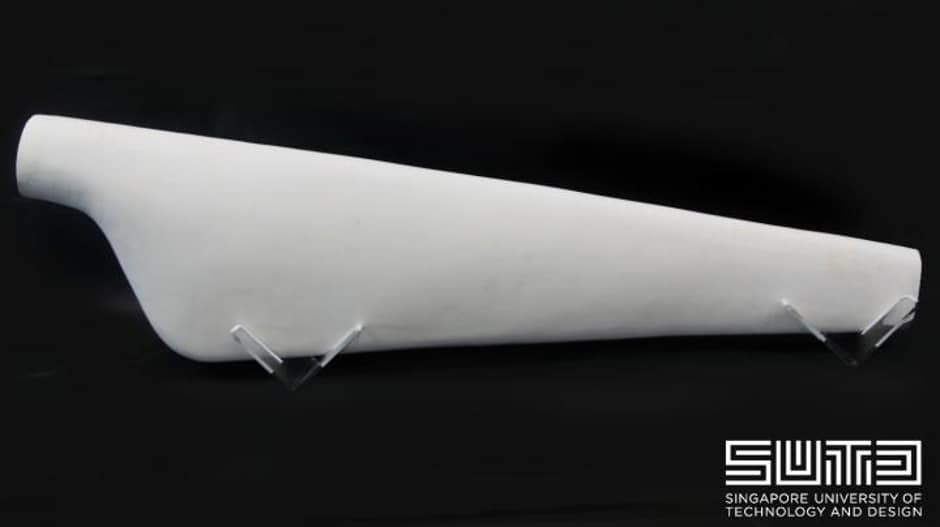
1.2m, 5.2kg turbine blade fabricated with cellulose and chitosan
The lack of scalability and high production cost are two of the issues that have stymied the use of cellulose as a 3D printing material, but a team from Singapore University of Technology and Design (SUTD) believe they have overcome these problems with FLAM (fungal-like adhesive materials).
According to SUTD, their approach has been inspired by the wall of the fungus-like oomycetes, which is reproduced by introducing small amounts of chitin between cellulose fibres. The resulting FLAM are said to be strong, lightweight and inexpensive, and can be moulded or processed using woodworking techniques.
No organic solvents or synthetic plastics are used to manufacture the material, which is scalable and can be reproduced without specialised facilities. FLAM is also fully biodegradable in natural conditions and outside composting facilities.
The results represent a turning point for global manufacturing
It is further claimed that the cost of FLAM is in the range of commodity plastics and 10 times lower than the cost of common filaments for 3D printing, such as PLA (polylactic acid) and ABS (Acrylonitrile Butadiene Styrene). The researchers have furthermore developed an additive manufacturing technique specifically for the material.
Co-lead of this research, SUTD Assistant Prof Javier Gomez Fernandez, said: "We believe this first large-scale additive manufacturing process with the most ubiquitous biological polymers on earth will be the catalyst for the transition to environmentally benign and circular manufacturing models, where materials are produced, used, and degraded in closed regional systems.
“This reproduction and manufacturing with the material composition found in the oomycete wall, namely unmodified cellulose, small amounts of chitosan - the second most abundant organic molecule on earth - and low concentrated acetic acid, is probably one of the most successful technological achievements in the field of bioinspired materials."
"We believe the results reported here represent a turning point for global manufacturing with broader impact on multiple areas ranging from material science, environmental engineering, automation and the economy,” added co-lead SUTD Assistant Prof Stylianos Dritsas. “So far we have been focusing on fundamental technology development, and little time has been invested in specific target applications. We are now at the stage of seeking industrial collaborators to bring this technology from the laboratory to the world."
The research has been published in Scientific Reports.




Nanogenerator consumes CO2 to generate electricity
Whoopee, they've solved how to keep a light on but not a lot else.